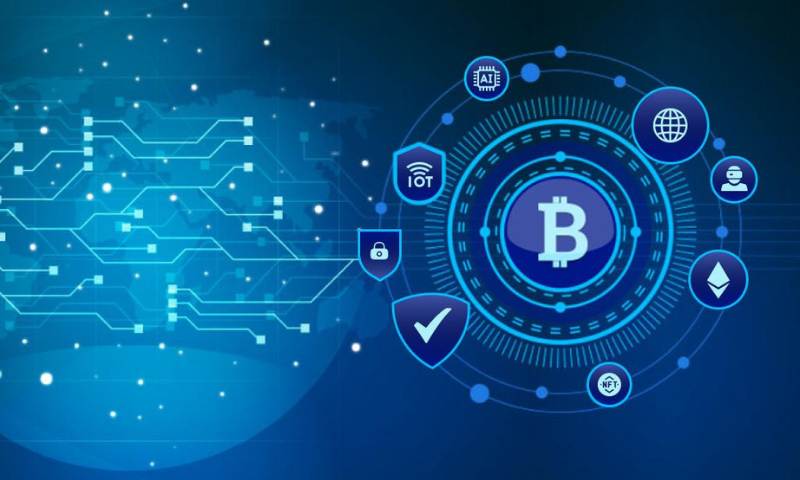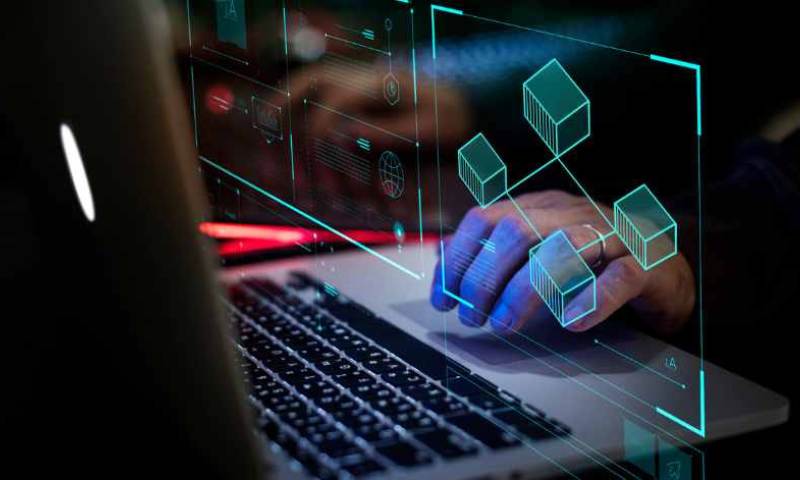Emerging trends in blockchain security are reshaping how we defend against cyber threats. As an expert closely watching these changes, I’ve seen cryptographic innovations evolve to guard your transactions better than ever. Techniques for protecting decentralized ledgers have surged forward, shielding against increasingly sophisticated attacks. With an eye towards the future, blockchain is even preparing to stand firm in the face of quantum computing. And while blockchain secures itself from intruders, smart contract security gets tighter, building more trust in every deal you make. Stay tuned, because the tools and methods we’re about to unpack could be the difference between a secure investment and a costly cyber incident. Let’s dive in and ensure you’re prepared for tomorrow’s security challenges today.
The Evolution of Cryptographic Innovations in Blockchain Security
Advancements in Protocol Encryption Techniques
Staying safe on the blockchain takes smart moves. We now have better ways to keep our blockchain data safe. These smart moves are like secret codes no one can crack. They make sure only the right people can see the data. It’s a bit like creating an unbreakable lock for our online valuables. Our keys keep getting better, and no one else can copy them. With each new key we make, our locks get even tougher to break. Our online treasures stay safe, as they should.
One key change comes from how we all agree on what’s true in the blockchain. We call these rules consensus algorithms. They’re like a big group of friends deciding on where to play. If one friend tries to cheat, the others stop them. Our blockchain does the same; it stops hackers from lying to us.
These new codes also help us keep an eye out for sneaky behavior. If someone tries to mess with our stuff, we know right away. It’s like having a guard that never sleeps. They watch over our blockchain day and night.
The Application of Zero-Knowledge Proofs
Now, here comes the cool part: zero-knowledge proofs. This is like telling a secret without giving it away. Imagine you found a hidden treasure but don’t want others to know where it is. With zero-knowledge proofs, you can prove you found it, without showing the map. This way, everyone believes you, but your secret stays safe.
These proofs are great for keeping our personal stuff private. When we do things on the blockchain, we don’t have to tell everyone who we are. We just show we’re allowed to do it, and that’s enough. It’s like having a magic cloak that hides us but still lets us play the game.
Also, zero-knowledge proofs are super fast. They let us do things quickly without waiting a long time. We stay safe, and we don’t get slowed down. It’s a win-win!
So, with these new tools, our blockchain stays tough against hackers. Our secrets stay secret, and we keep playing the game without worry. The more we learn and build, the safer we all are. And that’s what keeps us ahead of the game in this fast-moving world of blockchain magic!
Strengthening Decentralized Systems: From Ledger Protection to Quantum-Resilient Blockchains
Decentralized Ledger Protection Techniques
In the world of blockchain, we face threats each day. Hackers find new ways to break into systems. So, we always work to keep blockchains safe. We use what we call decentralized ledger protection. This means we make every part of the blockchain tough against attacks.
First, we look at smart contract vulnerability. This is like checking for weak spots in a ship’s hull. If we find them, we fix them. We use tests to find flaws and patch them up before they can cause harm.
We also focus on strengthening the whole blockchain. Think of this as a strong wall around a castle. This wall is made up of secure blockchain architecture. It includes things like special programs that watch for intruders, called blockchain intrusion detection systems.
Another brick in our wall is the consensus algorithm. This is the rule book that everyone in the blockchain follows. It makes sure that only true information gets added to the chain.
There are also rules we must follow called blockchain security compliance standards. These help us make sure that everything we do keeps the blockchain safe.
Quantum-Resistant Blockchain Technology
Now, let’s talk about the future. Have you heard of quantum computers? They’re super powerful. They could break the codes we use to keep blockchains safe today. That’s scary, right? But, don’t worry. We’re working on something called quantum-resistant blockchain technology.
This new tech is like a suit of armor for the blockchain. It uses very complex math to protect against even the smartest computers.
We’re testing new ways to lock up the information on blockchains. This includes zero-knowledge proofs. They are a clever trick. With them, you can prove you know a secret without giving it away.
All these methods help us stay ahead. They make sure blockchains are strong, now and in the future. They protect everyone’s money and secrets. And that’s what we work hard for every day.
So remember, staying safe in the blockchain world means always building better walls and always being ready for the next big challenge.
Smart Contract Security and Identity Management: Enhancing Trust in Transactions
Smart Contract Vulnerability Assessments
Smart contracts are nifty tools we use on blockchains. They’re like self-run programs that do set tasks when certain things happen. But, they’re not perfect out of the box. Some have weak spots that need fixing.
When I check these smart contracts, I look for any flaws. Flaws can let the bad guys in, which we can’t have. I poke and prod the smart contract’s code to make sure it’s solid. I’m like a locksmith checking if a lock is tough enough to keep thieves out.
We use a lot of techie tricks in these checks. For example, I use what’s called “fuzzing”. This is when I throw every sort of data I can think of at the smart contract. It’s to see if anything causes it to trip up. It’s sort of like trying to pick a lock with every key you have. If one key works, we know there’s a problem.
Another test is the “static analysis”. This is where I look at the contract’s code without running it. It’s like reading a recipe before you cook. You’re seeing if anything is missing or looks weird. Both these tests help make sure smart contracts are safe to use.
Identity Management on Blockchain
Keeping our identity safe on the blockchain is just as important. Think about it like this. On the web, your ID is like your home address or phone number. It’s what tells people “Hey, this is me!” Blockchains handle IDs too, but they make them safer.
On many blockchains, your ID is a secret code that only you know. It’s a clever blend of numbers and letters. It lets you do your thing on the blockchain without telling the whole world who you are.
But how do we keep this ID safe? Well, we’re always finding new ways. One big thing is using something called “multi-signature” security. It works like this: Instead of just one key to unlock your blockchain ID, you need several. It’s like having a door that needs three different keys to open.
We also have what’s called “biometric” security. This uses parts of you—like your fingerprint or your face—to lock and unlock your ID. It’s like your own personal mark that nobody else has.
Keeping our IDs safe on the blockchain means we can trust the system more. It helps us feel good about trading and sharing, knowing we’re all who we say we are.
Smart contracts and identity management might seem tough to get. But they’re really just ways to make trading and talking on blockchains safer and more private. Think of it like suitcases with locks at the airport; we want to keep our stuff safe while we move it around. That’s what I work on, making those locks tougher, so we can keep trading without a worry!
Adapting to New Threats: Tools and Methods for Proactive Blockchain Defense
Blockchain Intrusion Detection Systems
We live in a world where clever hackers lurk. They wait to attack blockchain systems. But, strong defense tools are in place to stop them. These are called blockchain intrusion detection systems. They watch and warn us of odd patterns. Odd patterns can mean danger. They protect your digital coins and data on blockchain networks. One such tool is anomaly detection. It finds the out-of-place actions. Once found, it can stop the harm early. This is a key part in secure blockchain architecture.
Many people ask, “What does an intrusion detection system do?” It scans. It monitors. It sets off alarms if it spots trouble. Think of it as a guard dog for your digital data. It barks loud when a stranger comes close to your virtual fence.
In simple terms, to avoid sneaky attacks, constant watch is crucial. The good news is, as attacks change, so do detection methods. New updates in these systems often happen. This means stronger safety for us all.
Blockchain Audit and Monitoring Tools
Now let’s talk about keeping a close eye on things. Blockchain audit and monitoring tools are big help. They check on the health of blockchain systems. They make sure rules are followed.
What’s an audit tool? Audit tools are like health check-up for blockchain. They look at past transactions. They make sure each one followed the rules. By doing this, they find the weak spots. When weak spots are found, they can be fixed. This helps everyone using the blockchain feel safe.
These tools can also give reports. Reports on security to people like us. This shows they take blockchain security compliance standards seriously. This brings trust and calm.
Having clear rules and checks brings order. Can we be certain that all is well with blockchain security? Not always. But with these tools, we can be close. They help us stay ahead. They make our blockchain homes stronger.
In all, these tools and methods form a top team. They have one job. Keep blockchain safe. They do so by never sleeping, always watching. New threats mean new solutions. The work never stops. But, for those of us guarding the digital realm, that’s just part of the fun.
By using these smart tools, we ready ourselves for whatever comes next. As they get better, so does our peace of mind. For every hacker that tries to sneak in, there’s a line of defense waiting. The game of cat and mouse in the world of blockchain security goes on. The clever minds behind defense tools know the weight they carry. They keep learning, improving, and making sure the treasure stays locked away. It’s a tough job, but someone has to do it. And in the blockchain world, that someone is the tough, clever defense tools.
We’ve explored how blockchain keeps its data safe. From new ways to lock away its secrets to standing up to future threats, blockchain is always getting tougher. We looked at how smart contracts check for weak spots and how blockchain knows who’s who. Plus, we saw tools that keep an eye out for sneaky attacks and search for any slip-ups.
I believe with the right moves, blockchain can stay several steps ahead of the bad guys. It’s like a treasure chest that keeps getting better locks. We can trust blockchain more as it gets smarter. Keep an eye on these cool changes; they’re making our digital money and info safer every day.
Q&A :
What are the latest developments in blockchain security protocols?
Recent advancements in blockchain security protocols include enhanced consensus algorithms, use of zero-knowledge proofs for increased privacy, multi-signature transactions for better access control, and the integration of quantum-resistant cryptographic methods. Additionally, there’s a growing focus on Layer 2 solutions for scaling and security, such as Lightning Network and Plasma.
How is AI being used to improve blockchain security?
Artificial Intelligence (AI) is increasingly used to monitor and secure blockchain networks. AI algorithms can detect patterns indicative of fraudulent behavior and can automate the response to security incidents. Machine learning models also help in predicting and preventing potential threats by continuously learning from new transactions and adjusting their security measures accordingly.
What are the security benefits of decentralized finance (DeFi) in blockchain?
Decentralized finance (DeFi) platforms leverage blockchain’s inherent security features, such as immutability and transparency, which help mitigate some risks associated with traditional financial systems. Smart contracts automate transactions without intermediaries, reducing human error and fraud risks. DeFi also allows for enhanced user privacy while maintaining transaction auditability.
Are there any new methods for securing smart contracts in blockchain technology?
New methods for enhancing smart contract security include formal verification, where mathematical proofs ensure that contracts perform as intended without bugs or vulnerabilities. Security-focused programming languages and development frameworks for smart contracts are also emerging, aimed at minimizing risks. Additionally, external audit services and bug bounty programs are becoming common practices for identifying and fixing issues.
How is the Internet of Things (IoT) impacting blockchain security concerns?
The integration of the Internet of Things (IoT) with blockchain brings new security concerns, including the need to secure vast numbers of connected devices. Blockchain can contribute to IoT security by providing a tamper-evident and decentralized framework for device coordination and data exchange. However, ensuring that IoT devices have robust cybersecurity measures in place to prevent them from becoming weak points in the blockchain network is an ongoing challenge.


